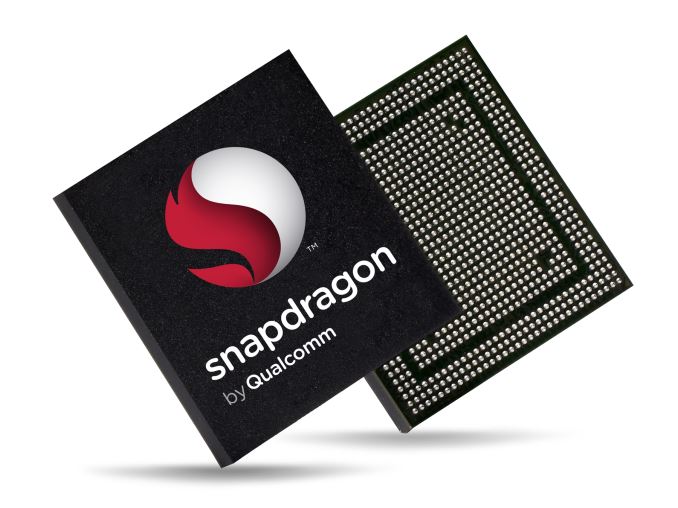Qualcomm Announces Snapdragon 821: 2.4 GHz Kryo
by Joshua Ho on July 11, 2016 7:30 AM EST
If you’ve been paying attention to the right places in the past few months it was probably obvious this was coming, but Qualcomm is announcing a higher tier to their Snapdragon 82x lineup, known as the Snapdragon 821 or MSM8996 Pro. While today’s announcement basically boils down to acknowledging that this SoC exists and that the big CPU cores have a clock speed of 2.4 GHz, it’s likely that in the months since the Snapdragon 820 was released Qualcomm engineering staff have been working on resolving various errata as well as improving their floorplanning and architecture implementation. It’s also likely that we will see a few new or otherwise revised IP blocks.
| Snapdragon 820 | Snapdragon 821 | |
| CPU Perf Cluster | 2x Kryo 2.2 GHz | 2x Kryo 2.4 GHz |
| CPU Power Cluster | 2x Kryo 1.6 GHz | 2x Kryo >2 GHz |
| GPU | Adreno 530 624 MHz | Adreno ??? ~650 MHz |
What isn’t in this announcement is that the power cluster will likely be above 2 GHz and GPU clocks look to be around 650 MHz but without knowing whether there are some changes other than clock relative to Adreno 530 we can’t really estimate the performance of this part. However, this information can be subject to change depending upon what happens at Qualcomm. It's important to note here that while these changes may seem to be small that improvements in the implementation of an SoC can have a dramatic effect on performance and power. I’m sure we’ll be learning more about this SoC in the coming months so for now we’ll just have to wait and see what comes next.










78 Comments
View All Comments
Death666Angel - Tuesday, July 12, 2016 - link
ARM margins are not Intel margins and probably never will be. They will continue to co-exist.tipoo - Tuesday, July 19, 2016 - link
"All Intel has to do is to remove some instructions from its x86 set"Sounds so simple. Look at how big the ucode and x86 decode are.
http://i.imgur.com/OKs8Qs2.jpg
speculatrix - Tuesday, July 12, 2016 - link
I'm sure Qualcomm use the name kyro not kyro. The article mostly used the latter. Commenters using eitherhp79 - Tuesday, July 12, 2016 - link
Cry-YoJoshHo - Wednesday, July 13, 2016 - link
https://www.qualcomm.com/news/snapdragon/2015/09/0...It's definitely Kryo.
jedih - Tuesday, July 12, 2016 - link
Quad core CPU is just enough for smartphones. These Hexa & Octa cores are power hogs. It would also be nice if they can come up with dual core units with 2x Kryo 2.4 GHz.7beauties - Friday, August 5, 2016 - link
Friends, beware of the promoted stories section at the bottom of AnandTech reviews. You may encounter ransomware like I did.hapeid - Monday, November 21, 2016 - link
Retrospooty, you are a fool. Apple's approach benefits anyone who buys an iOS device. The excessively multi-core solution benefits almost no one who buys an android phone, except for people who like running multithreaded benchmarks.Apple's way of using a few beefy cores isn't better just because they say so, or even because they have tight control over both software and hardware. Some things just don't parallelize well, and many of those that do are better run on the GPU. That's not to say that having lots of cores on a relatively inexpensive SoC isn't useful for some people, it is, though generally not in a phone.
Most of the android market is SoCs that integrate licensed ARM IP for CPU cores, not original designs. ARMs designs have tended not to push the edge of performance, because doing so would undermine their architecture licensees. The other reason is that one of their architecture licensees, Apple, invested much more aggressively than the others (particularly Qualcomm) and caught the others off guard in-terms of both performance, and the transition to 64-bit.
http://www.apkxmod.info - http://gadgetgaul.info